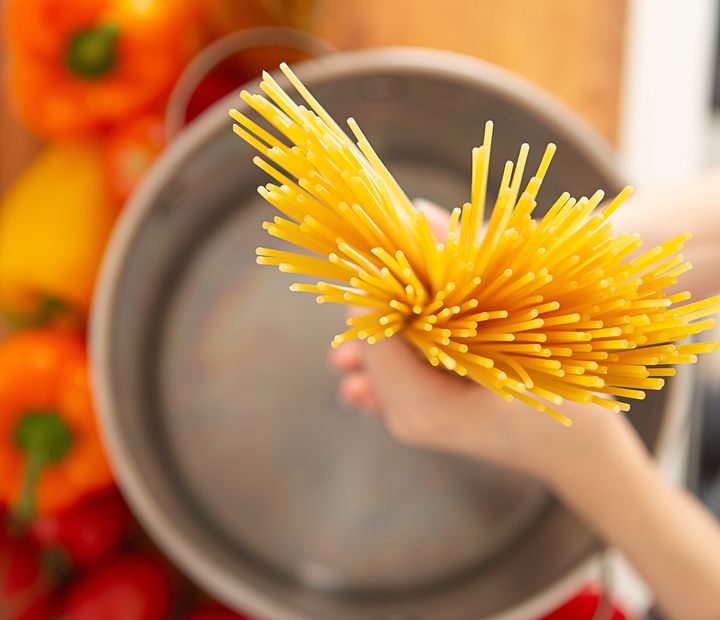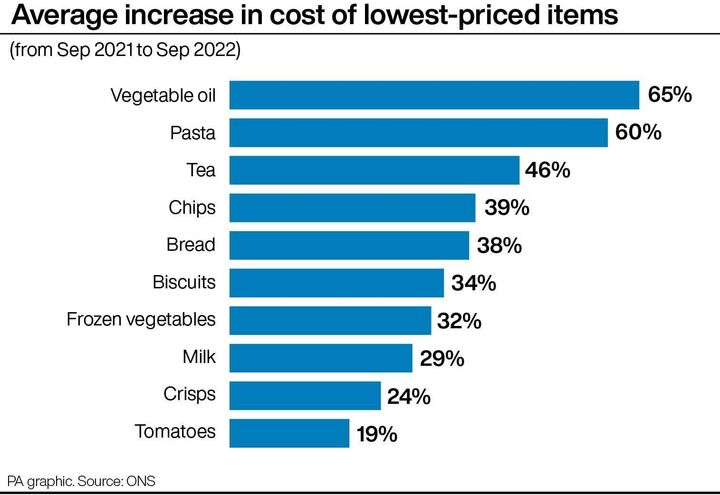
Inflation is pushing up prices all over the country – but why are they not all rising at the same rate?
Inflation is a means of measuring the overall amount prices are increasing (or decreasing) across the economy.
Inflation hit 10.1% in September, having briefly dropped to 9.9% during August, a sign of the cost of living crisis which is tightening its grip on the UK.
But, as the Office for National Statistics just found, it has been disproportionately affecting lower-priced groceries, which have increased 17% on average in the 12 months to September.
This is more than the average rate of food and drink inflation, measured by the ONS at 14.5%.
Even this is significantly more than the everyday inflation rate.
Here’s why.
What everyday food items have increased in price?
Some groceries have risen by more than 40% in the last year.
ONS found these items increased the most in price since September 2021:
- Vegetable oil by 65%
- Pasta by 60%
- Tea by 46%
- Chips by 39%
- Bread by 38%
- Biscuits by 34%
Since April 2022 alone, vegetable oil increased by 80p per litre (46%), chips by 26p for 1.5kg (24%) and milk by 25p per four pints (22%).
Overall, ONS found by looking at the changing price of 30 everyday grocery items, those with the lowest-price increased by around 17% in the year before September.
Fresh foods including fruit, vegetables and dairy have all been subjected to a sharp rise in price.
Food and non-alcoholic drink prices jumped by 14.6% in what is believed to be the largest increase since 1980.

Have any items decreased in price?
In the last year, only a handful of items have fallen in price.
- Orange juice by 9%
- Minced beef by 7%
- Sugar by 0.3%
- Rice by 0.2%
Yoghurt and pizza have had a stable price despite the crisis, according to ONS.
Why are these items increasing by different amounts?
While the war in Ukraine is contributing to the cost of living crisis and inflation through the energy crisis, there are other factors to consider, too.
Transport is now more expensive. The increase in petrol and diesel prices faced by motorists came down to the rise in the cost of crude oil. Demand for the petrol soared after lockdowns were lifted around the world and it’s all been exacerbated by Russia squeezing exports, to punish Ukraine’s European allies.
Then there’s the ongoing problems with the weak pound and strong US dollar, adding problems to international trading.
Brexit-related administrative checks and costs need to be considered too, with imports from the EU now costing more since the UK is out of the single market and delays at borders racking up the price.
Packaging has been impacted as well. Again, energy costs, production disruptions and a lack of raw materials have all impacted the way our food is packaged.
Then the energy crisis means greenhouse costs have shot up, along with fertiliser prices, while CO2 – used to accelerate plant growth – the price of natural gas, raw materials and fuel for fertiliser production have crept up as well.
The winter has added further pressure, with farmers being forced to use more lighting to encourage growth during the shorter days.
And finally, Brexit and the pandemic means there are fewer workers available to work in the UK – so businesses now have to offer higher salaries to interest employees.